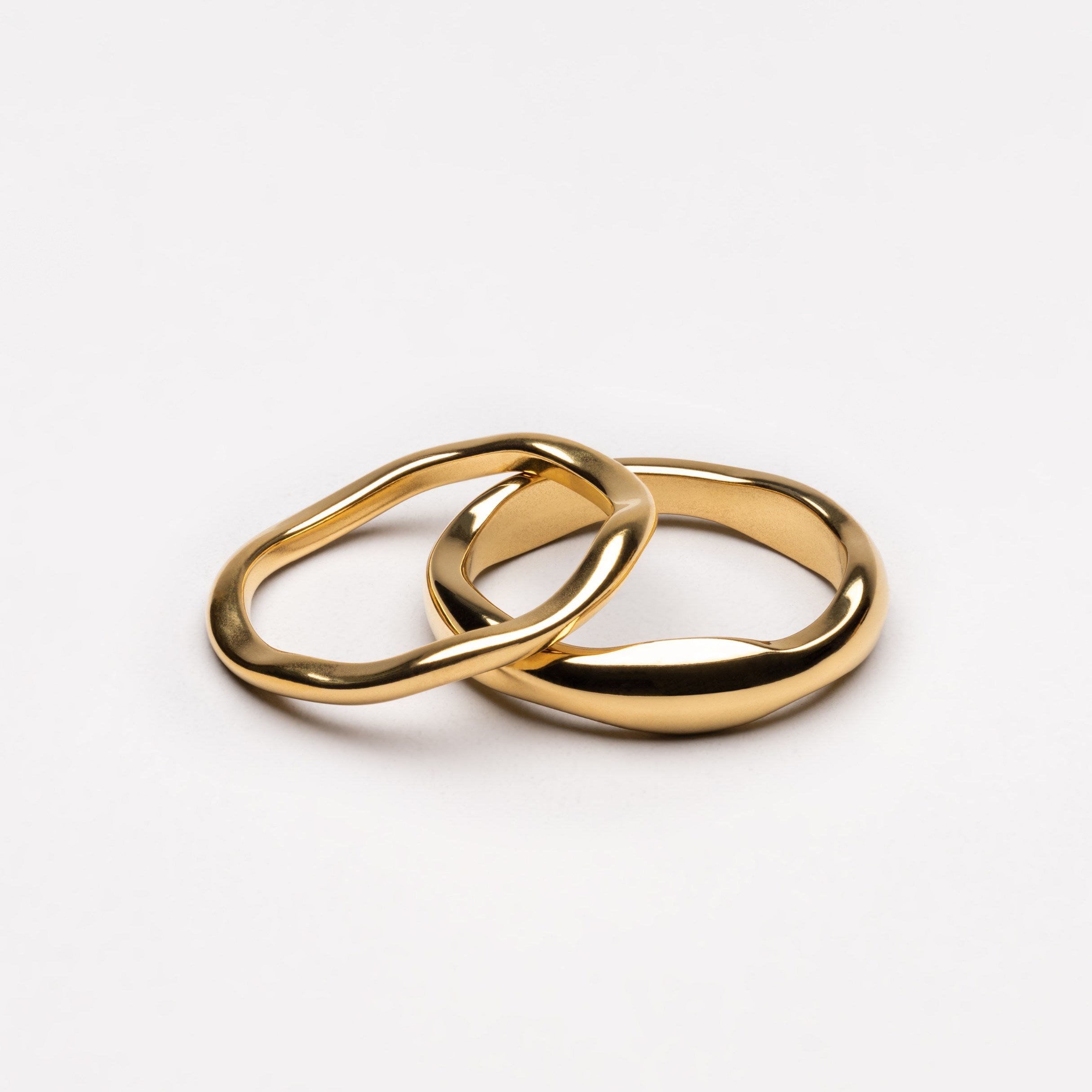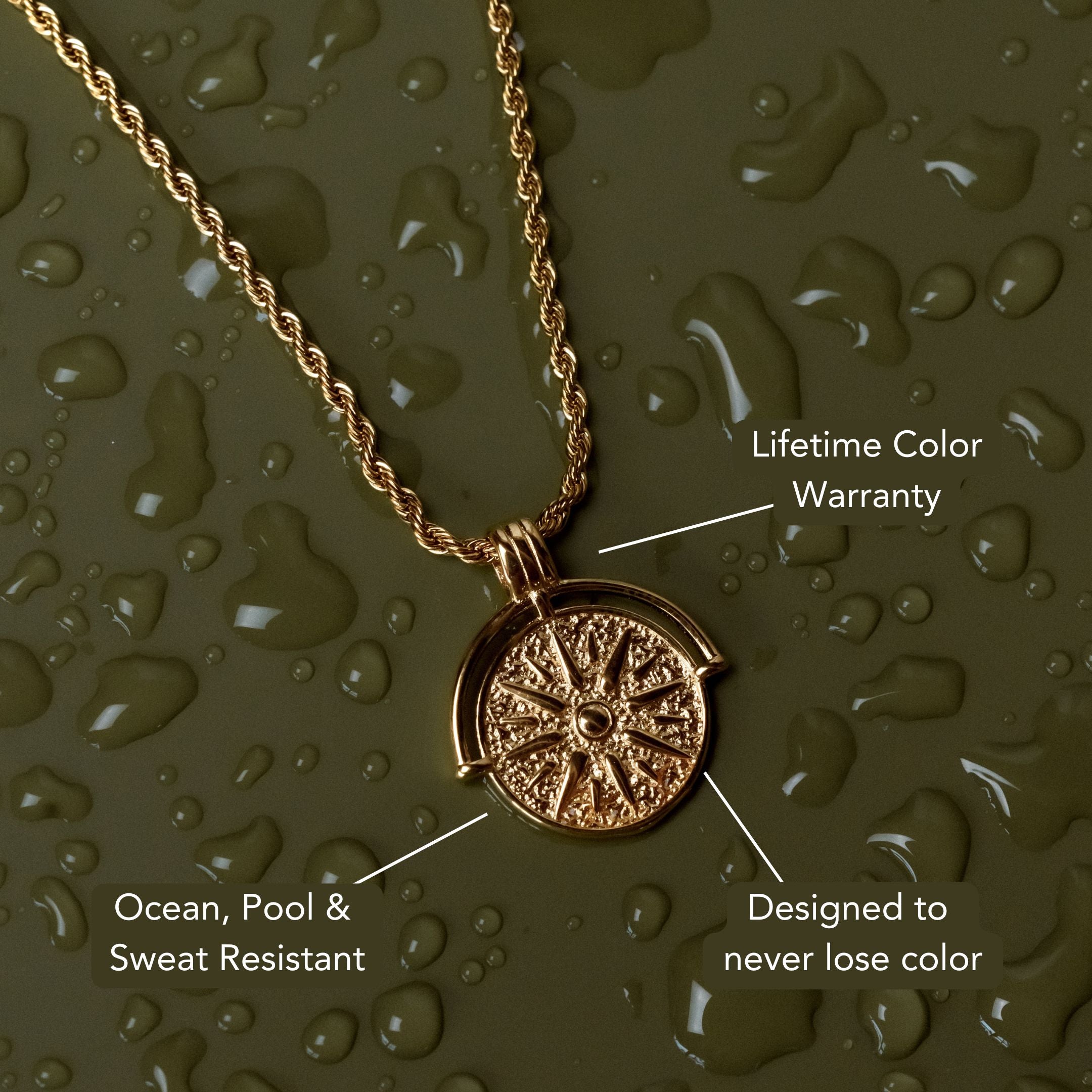
The Legacy and History of Pearls in Jewelry
The history of pearls in jewelry is a rich tale of nature’s craftsmanship and cultural reverence. From ancient civilizations that prized pearls as rare treasures traded along the Silk Road to modern innovations that support ethical and sustainable cultivation, pearls have long symbolized elegance and prestige. Today, they continue to bridge tradition and modernity with their timeless appeal. If you’re drawn to this legacy, explore our Gold Pearl Drop Earrings collection—where classic beauty meets contemporary design.
Ancient Origins and Early Pearl Discoveries
Although pearls form naturally within mollusks, their discovery and use in jewelry traces back to ancient civilizations that valued their rarity and luster. When you examine early pearl discoveries, you’ll find that ancient peoples recognized the unique process of pearl formation inside the oyster shell.
As a foreign particle entered the mollusk, layers of nacre gradually enveloped it, producing a lustrous sphere over several years. Archeological findings reveal pearls in burial sites and royal adornments from Mesopotamia, Egypt, and the Indus Valley, signifying high status and wealth.
You can see how the technical knowledge of extracting pearls from oyster shells required both skill and patience. Early pearl jewelry showcases careful craftsmanship, with pearls set in gold or silver, reflecting their esteemed position in ancient cultures.
Pearls in Mythology and Symbolism
Beyond their physical allure and technical extraction, pearls have accumulated rich layers of meaning within the mythologies and symbolic systems of numerous cultures. When you examine the mythical symbolism, you’ll find that pearls often represent purity, wisdom, and perfection.
In Hindu cosmology, pearls are said to be dewdrops from the moon, signifying transcendence and spiritual illumination. Ancient Chinese legends attribute their formation to the tears of mythical creatures, embedding pearls with protective and magical properties.
You’ll notice that in Greco-Roman tradition, pearls symbolize love and marriage, frequently associated with deities like Aphrodite. These diverse cultural meanings showcase pearls as more than ornamental materials—they’re conduits for expressing ideals, virtues, and cosmological beliefs, deeply woven into the fabric of collective human narratives across centuries.
The Role of Pearls in Royalty and Aristocracy
As you examine the regalia and adornments of historical elites, pearls consistently emerge as central symbols of status and legitimacy within royal and aristocratic circles. You’ll notice that monarchs strategically incorporated pearls into crowns, scepters, and ceremonial robes to project both dynastic continuity and refined taste.
These lustrous organic gems, often arrayed in graduated strands or set in intricate filigrees, distinguished royal adornments from those of lesser ranks. For aristocratic status, pearls functioned as visual shorthand for inherited privilege, wealth, and access to rare resources.
Their rarity and meticulous cultivation made them coveted tokens in dowries, diplomatic gifts, and portraiture. By analyzing these patterns, you gain insight into how pearls transcended mere decoration, serving as integral elements of sovereign identity and societal hierarchy.
Pearls Along Historic Trade Routes
How did pearls traverse continents and cultures to become coveted global treasures? You’ll find that ancient trade routes—like the Silk Road and maritime passages linking the Persian Gulf, India, and the Mediterranean—facilitated the movement of these exquisite organic gems.
Merchants utilized advanced navigation techniques and established intricate trade networks, enabling pearls to reach distant markets. As you analyze these exchanges, you’ll notice pearls weren’t merely valuable commodities; they became agents of cultural exchange.
Rulers, artisans, and traders adopted foreign jewelry techniques, integrating pearls into local aesthetics and ceremonial attire. This cross-pollination spurred innovations in craftsmanship and design, amplifying pearls’ desirability.
Innovations in Pearl Cultivation
Although natural pearls captivated ancient societies, breakthroughs in cultivation have fundamentally transformed the pearl industry. Today, you’ll encounter highly controlled cultivation techniques that rely on precise nucleation, grafting mantle tissue into mollusks to stimulate nacre secretion.
Pearl farming innovations now employ advanced water quality monitoring and selective breeding, optimizing mollusk health and nacre deposition rates. You’ll notice that technicians carefully regulate temperature, salinity, and nutrient levels to guarantee consistent pearl formation.
Techniques like X-ray imaging allow you to assess pearl development without harming the mollusk, maximizing yield and quality. By integrating genetic research, farmers produce oysters with superior nacre-producing traits.
These scientific advancements have enabled consistent, scalable pearl production, allowing you to access lustrous, uniform pearls that were once rare treasures reserved for royalty.
Pearls in Art and Literature
While artists and writers have long drawn inspiration from the luminous quality of pearls, their symbolic resonance extends far beyond surface beauty. You’ll notice that, in visual art, pearls often function as signifiers of purity, wisdom, or unattainable desire—echoing their oceanic symbolism.
Painters render pearls with meticulous chiaroscuro to emphasize their iridescent luster and tactile fragility, reinforcing their allure as both material and metaphor. In literature, pearls serve as potent literary metaphors, encapsulating themes of hidden value, transformation, or moral complexity.
You can trace their presence from classical poetry to modern novels, where their formation—concealed within oysters—mirrors the development of inner virtue or concealed truths. By analyzing these depictions, you’ll appreciate how pearls become vessels for layered cultural meanings across artistic domains.
Shifting Trends in Pearl Jewelry Design
As design sensibilities evolve, pearl jewelry continually reinvents itself through innovative settings, experimental forms, and the integration of mixed materials. You’ll notice designers adopting minimalist style, where single pearls are suspended on delicate chains or set asymmetrically for a refined, understated effect. These streamlined aesthetics highlight pearls' natural luster while emphasizing clean lines and negative space.
Mixed media techniques—combining pearls with metals like titanium or unconventional elements such as leather—introduce tactile contrast and visual intrigue. This progression enables you to experience pearl jewelry as an expression of casual elegance, moving beyond traditional strands to versatile, everyday wear.
The emergence of open settings and modular designs further reflects a shift toward adaptability, allowing you to personalize and layer pearl adornments with contemporary flair.
Iconic Figures and Their Signature Pearls
Throughout history, influential figures have leveraged pearls as visual emblems of status, sophistication, and personal identity, shaping both cultural perceptions and jewelry conventions.
When you examine portraits of Elizabeth I, you see pearls meticulously integrated into her regalia, reinforcing her sovereign authority and the era’s affinity for baroque opulence.
Coco Chanel’s strategic layering of pearl strands transformed them into a modern fashion staple, demonstrating how celebrity endorsements can dictate global trends.
For Jacqueline Kennedy, a three-strand pearl necklace became an iconic accessory, symbolizing grace and diplomatic acumen.
These signature pearls extend beyond accessories; they crystallize cultural symbolism, conveying messages of power, refinement, or rebellion.
Modern-Day Significance and Sustainability
Driven by evolving consumer values and technological innovation, pearls have acquired new relevance in today’s jewelry landscape, where ethical sourcing and environmental impact command critical attention. You now encounter pearls produced through sustainable farming practices, which rely on ecosystem preservation, water quality monitoring, and responsible mollusk management. These methods reduce overharvesting and foster biodiversity, directly addressing ecological concerns.
When you select ethically sourced pearls, you support transparency in supply chains, fair labor conditions, and traceability from farm to market. Advances in aquaculture technology have also minimized the carbon footprint and chemical usage associated with pearl cultivation.
As a discerning consumer, you’re empowered to demand certifications and documentation that verify sustainability claims, ensuring your jewelry choices contribute to industry reform and environmental stewardship without compromising the luster or beauty of pearls.
Frequently Asked Questions
How Do You Differentiate Between Natural and Cultured Pearls?
You can distinguish natural vs. cultured pearls by analyzing their internal structure. Pearl farming produces cultured pearls with a uniform nucleus, while natural pearls lack this. Use X-ray imaging to reveal concentric growth rings unique to each type.
What Are the Main Types of Pearls Found Globally?
You’ll encounter Akoya, South Sea, Tahitian, and Freshwater pearls globally. Each type varies in size, luster, and color, depending on cultivation techniques and specific pearl farming regions, such as Japan, Australia, French Polynesia, and China.
How Should Pearls Be Cleaned and Stored for Longevity?
To guarantee pearl longevity, use gentle cleaning methods—wipe pearls with a soft damp cloth and avoid harsh chemicals. For ideal storage tips, keep pearls in a soft pouch, away from heat, dryness, or abrasive materials to prevent damage.
Are Pearls Considered an Ethical Gemstone Choice?
When you evaluate pearls as an ethical gemstone choice, consider ethical sourcing and environmental impact. Cultured pearls often have lower ecological footprints than mined stones, but you’ll need to verify responsible farming practices and sustainable aquaculture standards for assurance.
What Factors Most Affect the Value of a Pearl?
You’ll find a pearl’s value hinges on pearl grading criteria: luster, surface quality, shape, size, and nacre thickness. Market demand also drives prices, especially for rare colors or exceptional, blemish-free specimens with strong orient.
Conclusion
As you reflect on pearls’ enduring allure, you recognize their transformation from rare natural marvels to cultured gems shaped by technological innovation. You’ve seen how pearls serve as both status symbols and artistic muses, woven into royal regalia and modern fashion alike. By understanding their geological formation, historical trade patterns, and evolving cultivation methods, you appreciate pearls’ legacy—not merely as decorative adornments, but as benchmarks in gemological advancement and cultural expression through centuries.























Leave a comment
This site is protected by hCaptcha and the hCaptcha Privacy Policy and Terms of Service apply.